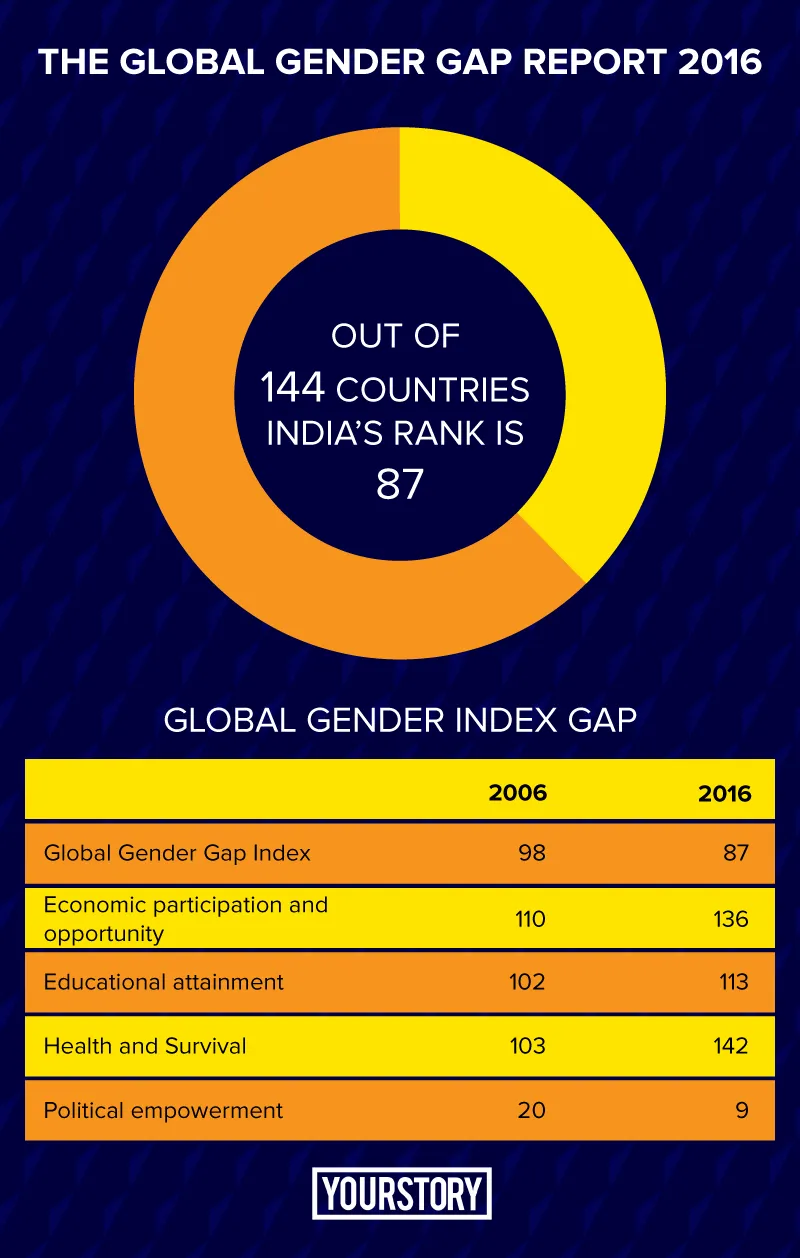Do you know how much money India is losing because of lack of gender parity?
Women constitute one-half of the world’s population. They deserve equal access to health, education, economic participation and political decision-making power.
However, if that were the case we would not be discussing gender disparity. The World Economic Forum has been quantifying the magnitude of gender-based disparities and tracking their progress over time, 2006 to be precise.
The report states: Talent and technology together will determine how the Fourth Industrial Revolution can be harnessed to deliver sustainable economic growth and innumerable benefits to society. Yet, if half of the world’s talent is not integrated — as both beneficiary and shaper — into the transformations underway, we will compromise innovation and risk a rise in inequality.

Gender parity is an important cause for a call to action for countries across the globe to accelerate towards gender equality.
Here’s why gender parity is important:
Significant economic dividends
There is a significant loss of economic dividends to companies, organisations at the micro-level and to the country and globe at the macro-level because of gender parity. Here is how India is losing its money:
If only that were the case then the global economy would be yielding significant economic dividends. The Global Gender Gap report index pegs that economic gender parity would have given an additional GDP to the following:
$240 billion: United Kingdom
$1,201 billion: United States
According to the MGI Power of Parity report released in 2015, in 46 out of the 95 countries analysed, the impact could be more than 10 percent of annual GDP in 2025 compared with business-as-usual.
The biggest relative scope to add GDP is in India at 16 percent, followed by Latin America with 14 percent, and China and sub-Saharan Africa, each with 12 percent.
Women’s limited access to the labour markets also adds to loss in the economy. While the law in India mandates no discrimination in hiring women, women do not comprise the majority of our workforce. According to data, the labour force participation rate of women was at 35 percent in 1990 and dropped down to 27 percent in 2014.
The lack of women’s participation in the formal economy, according to the Global Gender Report, is also a business issue — costing women, companies and, ultimately, entire economies.
The report states that the female talent remains one of the most under-utilised business resources, either squandered through lack of progression or untapped from the onset. Business leaders and governments increasingly note that tackling barriers to equality can unlock new opportunities for growth.
Education and health
Gender parity in education according to the World Economic Forum report shows that increased gender parity in education lowers infant and child mortality rates, lowers maternal mortality rates, increases labour force participation rates and earnings, and fosters further educational investment in children.
In the East Asia and the Pacific region, specifically, it has been estimated that between $16 billion and $30 billion is lost annually as a result of gender gaps in education.
India’s status
India ranks 87 out of the 144 countries on the Global Gender Index Gap.
The report compares the data for 2016 with 2006 across four parameters: health, education, political empowerment and economic participation and parity.

As regards economic participation and opportunity, we have slid from 110 to 136, which raises a flag. It means we have slid down in terms of economic parity. According to the report, women work three times as often as men as contributing family workers in family enterprises and are twice most likely to work part-time. A persistent wage gap too does not help.
In India and certain parts of the world, women still retain the primary responsibility for unpaid work such as caregiving and household chores. The report shows that the sum total of the time spent by women in both paid and unpaid work is higher than for men. Demography plays a major role in how the unpaid work gets divided. In a patriarchal society like India, women end up with almost all or the majority of the unpaid work from household chores, to rearing children, to being caregivers, and in the very low income brackets, they are often the sole breadwinners too.
Both health and education show dismal results too. We have slid on the health front from 103 to 142. With technological advancement and innovation in healthcare, the numbers have not improved. These figures show that women’s health in India need more attention.
In terms of education, we have moved from 102 to 113. Our distance to parity in the educational sector remains quiet high. Gender bias impacts the education system and also contributes to women’s workforce pattern. Gendered subject choices in education and training are reflected in labour markets with traditionally male and female jobs. The report shows that there are about 25 female and 33 male STEM graduates in India. This gap needs to be bridged and gender bias in education and in choice of subject needs to be reduced.
Given that the economy is losing money due to gender parity, it becomes even more pertinent to push for a change. Driven by patriarchy and gender divide, we need a call for action that shows tangible results and especially in the field of education, healthcare and economic participation. We need to rework on the policies to make sure they make a greater impact, follow closely on the schemes that government is running to gauge impact and to be aggressive when it comes to gender parity. In the context of India, there is a need to address cultural norms that propagate the gender divide. Change will not happen overnight, but with continued efforts to reduce gender parity we can hope for better results.







